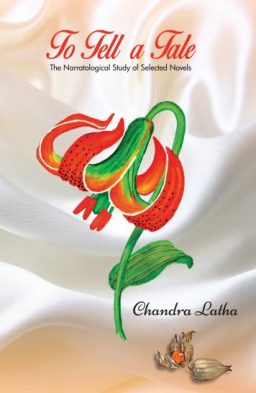
To tell a tale-21
(Chapter-4 Part-2)
-Chandra Latha
The Shattered Glass: The Tin Drum
Günter Grass
Oskar’s perspective of photographic image gives rise to a contemplation upon inconsistency between accepted history and individual remembrance which draws together the motifs of perception, memory, representation and photography to register the after-image of the past. The photographic images achieve a penetration into reality and prompt a radical criticism with its nature of alienated medium.
The Tin Drum – narrates not a story of an obscene dwarf, based upon the auto-biography of a vulgar author. The linkage is the other way around. It is a story with Oskar epitomizing the German outlook and the Danzig is the microcosm of Germany.
In The Tin Drum, the first of the Danzig Trilogy, the novelist brilliantly combines different narrative styles. Applying all the available narrative tools, The Tin Drum’s narrative becomes a covert. It’s narrative is both homodiegetic and heterodiegetic simultaneously, the narrative situation is figural. It has an unreliable narrator and it is an open text.
The Incipit of the narrative is: “Granted : I am an inmate of a mental hospital; my keeper is watching me ,he never lets me out of his sight; there’s a peep hole in the door, my keeper’s eye is the shadow of brown that can never see through the blue eyed type like me.” (The Tin Drum, Pg.1)
Thus the incipit introduces a narrator with abnormal sensibility who is under constant observation as a patient. His narration begins in an unreliable tone in an unusual set up. Words like the peep-hole, keeper’s eye and sight indicate the photographic eye. The watcher’s eye is the in shade of brown, where as brown is the shade of the Nazi, and the narrator blue-eye is the colour or Kashubian-polish origin, an inquisitive expression of free life. Usage of the word “inmate” leaves an open hint that the narrator is not only a patient but a prisoner under strict surveillance.
This novel’s fabula deals with the life of a self- defined dwarf who decides not to grow after his third birthday and lives through two world wars and their aftermath. The syuzhet is the memoir of the dwarf in the mental asylum and dates back to his grandparents and ends with his trial on the murder of a nurse. The Nobel prize award committee introduced Günter Grass as the novelist “with his allegorical and wide-ranging picaresque novel The Tin Drum (filmed by Schlöndorff), a satirical panorama of German reality during the first half of this century, which, with Cat and Mouse and Dog Years, was to form what is called the Danzig Trilogy.” (http://www.nobelprize.org/ Nobel Prizes/literature/laureates/1999/grass-bio.html)
By definition, allegory is a figurative mode of representation conveying a meaning other than the literal. Allegory communicates its message by means of symbolic figures, actions or symbolic representations. As a literary device, an allegory is a visual symbol representation. As a literary device, an allegory in its most general sense is an extended metaphor.
The Tin Drum, the title of the novel, is a significant symbol of art, that of the narrator, Oskar Matzerath, an inmate of a mental asylum, whose memoir makes the novel. The Tin Drum is a symbolic depiction of World War–II in comparison with Oskar’s art and music. Oskar is an auditory clairvoyant baby born in 1924 and writes his memoir between 1952-54 at the age of 28-30 years. On his third birthday he receives a tin drum as a gift from his mother, which becomes his identity and symbolic feature. Oskar’s denial of growth and shrinking world view is a symbolic expression of the status of Nazi Germany with its own drums and shrieks and avoidance of personal accountability.
Oskar, himself, is a symbolic figure, reflecting the common guilt of post–war German conscience who combats war with art and music, symbolically portrayed by his Tin drum and his voice. The Tin Drum is not only a symbol but the drumming is the primal communication method that Oskar technically transcends the narrative. The tin drum primarily focuses on the cultural identity of Germany during, before and after the war and its guilt, shame, anger, and fear.
Apart from The Tin Drum, another significant component of Oskar’s music is his voice. Oskar’s voice is a terrible scream which exerts incredible power that could break glass. Oskar joins the gang of the Danzig street children, uses his voice to rob stores by breaking the glass of their front windows.
Grass’s symbolic imagery subtly aligns with political and cultural events and the reader realizes that Oskar is an embodiment of krystallnacht, the night of broken glass, 9th and 10th November, 1938, which signaled the unmasked aggression of the Nazi party. On that crystal night nearly thirty thousand Jews were confiscated and taken to concentration camps.
Pill box, a war field bunker, is built with concrete. “…the whole of Germany is going to have to be rebuilt. Stones, Shells, sand, cement…and a puppy….walled up in the foundations,” (The Tin Drum, Pg.333) says a Nazi captain. “…pretty soon there won’t be a single puppy left in the whole sector…that concrete filled with puppy bones was a harsh symbol of the hard face of the war, named “barbaric, mystical and bored!” (The Tin Drum, Pg.333) And, after the war, filled with guilt, defeat, shame and fear, Germany needed to rebuild their country. They depend on surrogate tears, the Onion Cellar which symbolically reflects the need of that day.
Oskar symbolically embodies the wish to dismantle the emergent Nazi party as well as the violence of the party. A critic, David Wiley, rightly observes, banging the tin drum that he receives as a gift for his third birthday (often to the confusion of the Nazis) and using his nearly inhuman shriek to shatter glass (which can be read as a twist on the Nazis’ Kristallnacht). Another reviewer writes, that Oskar stands for the bulk of Germans who went along with the Nazi regime. They all in a sense behaved like docile children and failed to take the responsibility necessary to oppose the regime. (Amazon Review, Pg. 19)
Grass’s symbolism elucidates the horrors of the Nazi’s regime into a classic allegory which becomes a wonderful narrative tool.
The Tin Drum is obviously a social satire written during post-war Germany awakening the common guilt and German conscience that passed through the fear, horror and guilt of Nazism. The Tin Drum is the first of the Danzig trilogy which reflects the period of war (1920’s to 1950’s) from Kristallnacht to the execution of survivors of the Polish post-office.
The Tin drum is described as a picaresque novel. Scholars like Nause have proposed that picaresque novels are produced in abundance during times of social change or crisis and that they depict the lives of those with repressed, disturbed or lost identities.
The picaresque novel is a popular sub-genre of prose fiction, originally developed in Spain which is usually satirical and depicts in realistic and often humorous detail, the adventures of an engagingly roguish hero who lives by his or her wits in a corrupt society. The picaresque novel usually adopts the form of a fictional auto-biography told by a first–person narrator who reports and comments on his past deeds and experiences. The narrator, Oskar Matzerath begins his memoir, “Granted: I am an inmate of a mental hospital…” (The Tin Drum, Pg.1) He was 30 years old, just as Jesus, when he concluded his memoir: “I waited about thirty five seconds: then Oskar said: I am Jesus.” (The Tin Drum, Pg.367)
Here, the narrator takes two different modes simultaneously, both first and third person narratives (I, Oskar). This choice of double narration makes the narrator an unreliable narrator. This nature of unreliability, the ironic tone, itself is a significant feature of a picaresque novel. The narrative implies that the narrator changed his life by distancing himself from picaresque lifestyle. This distancing or conversion, combined with a “desangano” or “disillusionment” occurs at or near the end of the novel. When Grass was asked in the Paris review interview, about the simultaneous presentation of first and third person, in the narrative, Grass responded “One must always seek out fresh perspectives. For example, Oskar Matzerath. A dwarf—a child even in adulthood—his size and his passivity make him a perfect vehicle for many different perspectives. He has delusions of grandeur, and that is why he sometimes speaks of himself in the third person, just as young children sometimes do. It is part of his self-glorification. It is like the royal we, and in the spirit of de Gaulle, saying, “moi, de Gaulle …” (Elizabeth Gaffney. Günter Grass, The Art of Fiction No. 124. https://www.theparisreview.org/interviews/2191/gunter-grass-the-art-of-fiction-no-124-gunter-grass. Issue 119, Summer 1991) These are all narrative postures that provide distance.
*****
(Contd..)

Chandra Latha, writer from Nellore won Telugu Association of North America award in 1997 for the novel “Regadi vittulu”. Her other novels are Vardhani(1995) and Vallu veellu paarijaataalu (2011). Her short fiction includes nearly 80 stories compiled in nenu nanna navutha (1996),Idam shareeram (2003) and vivarnam(2007). Her non-fiction are (Fish can fly!) ”vacche daretu(2010), itanala kadaku eeboothi boTlu(2010). And also published her blogposts in a book madata pejee(2010).
